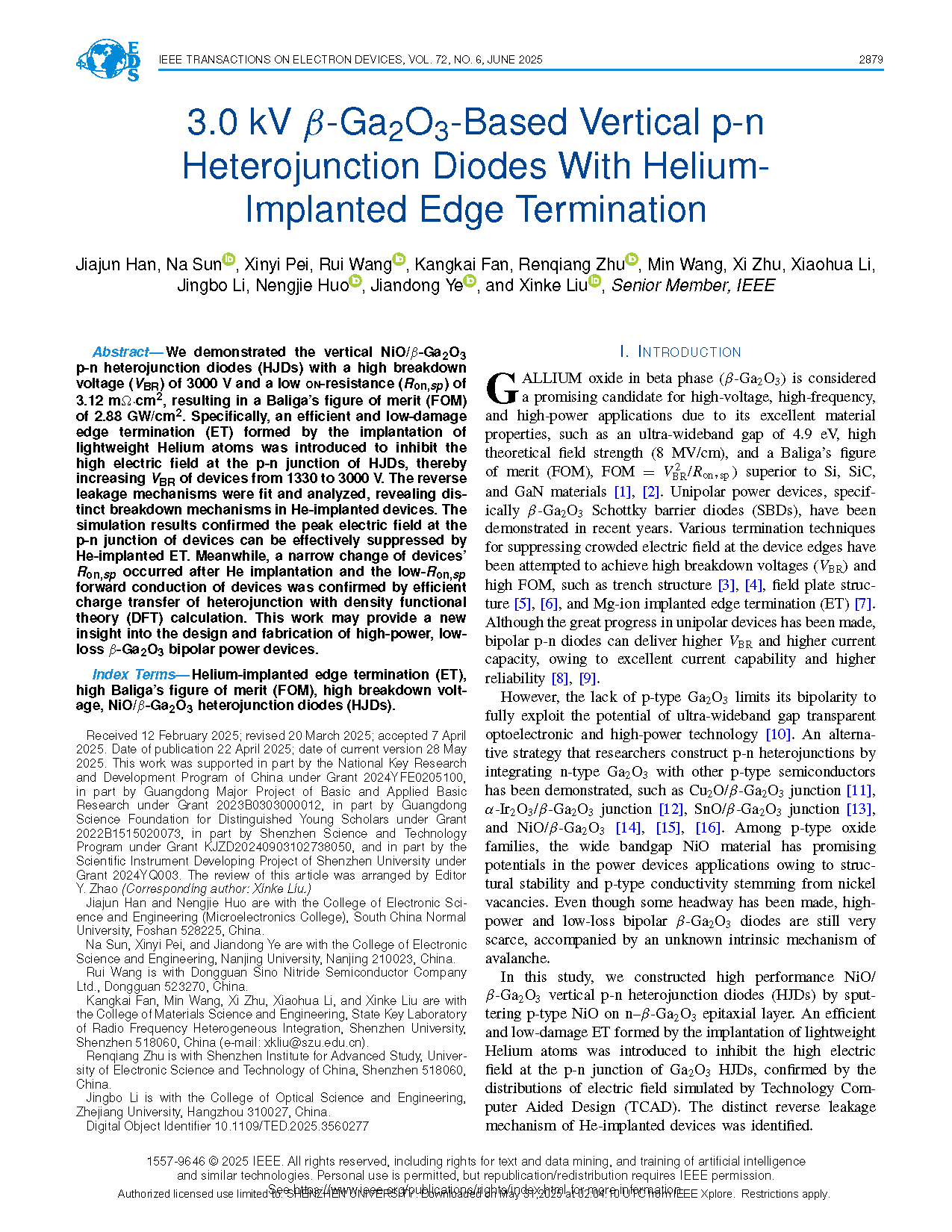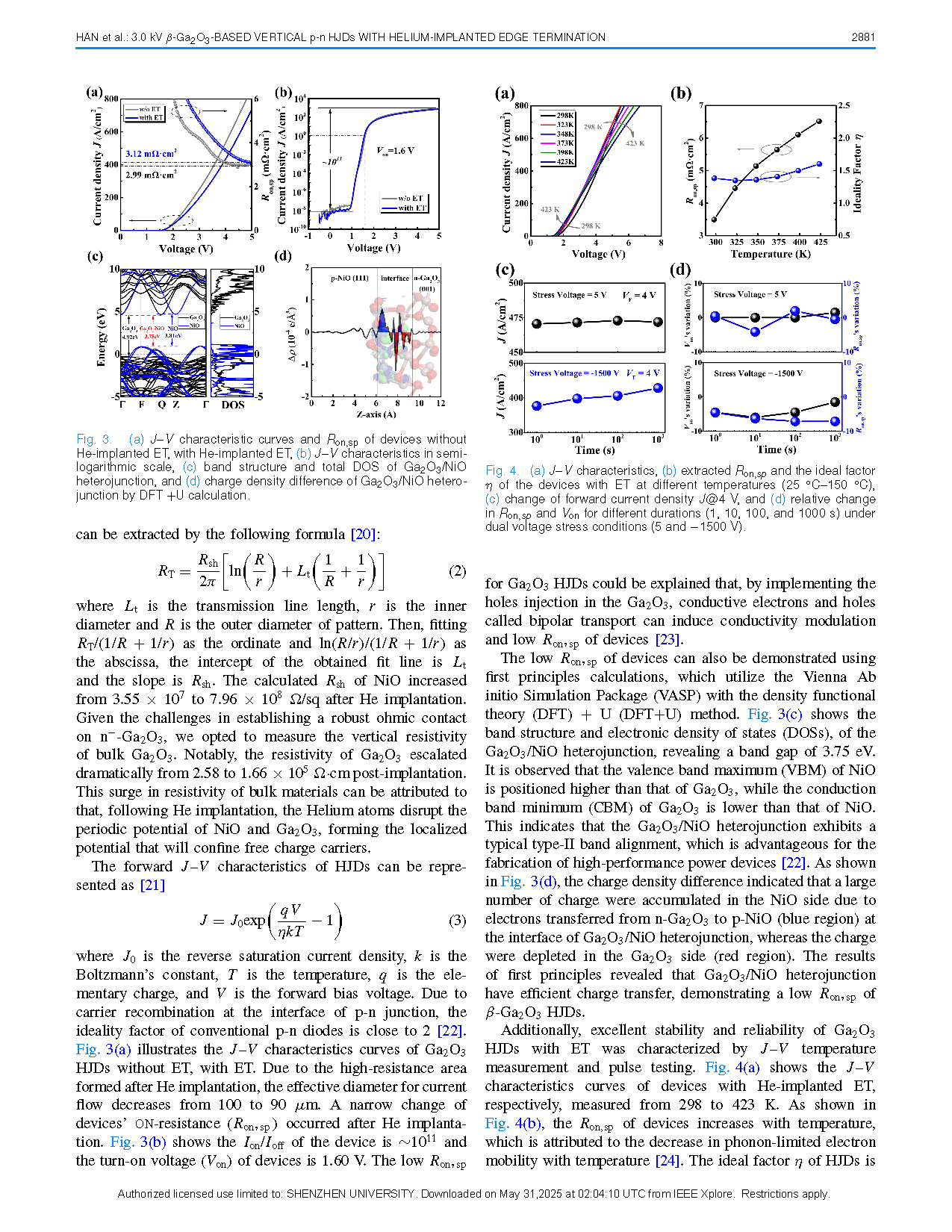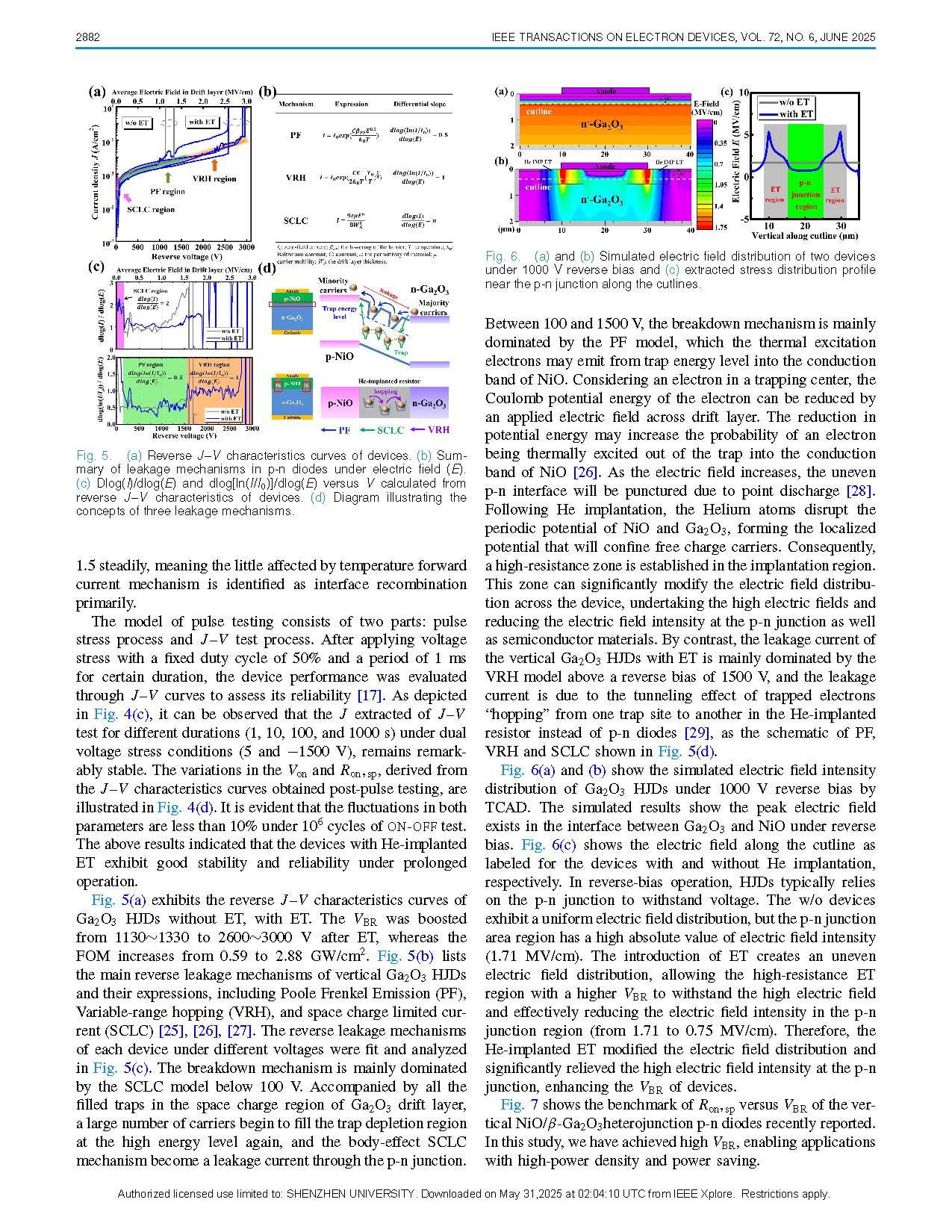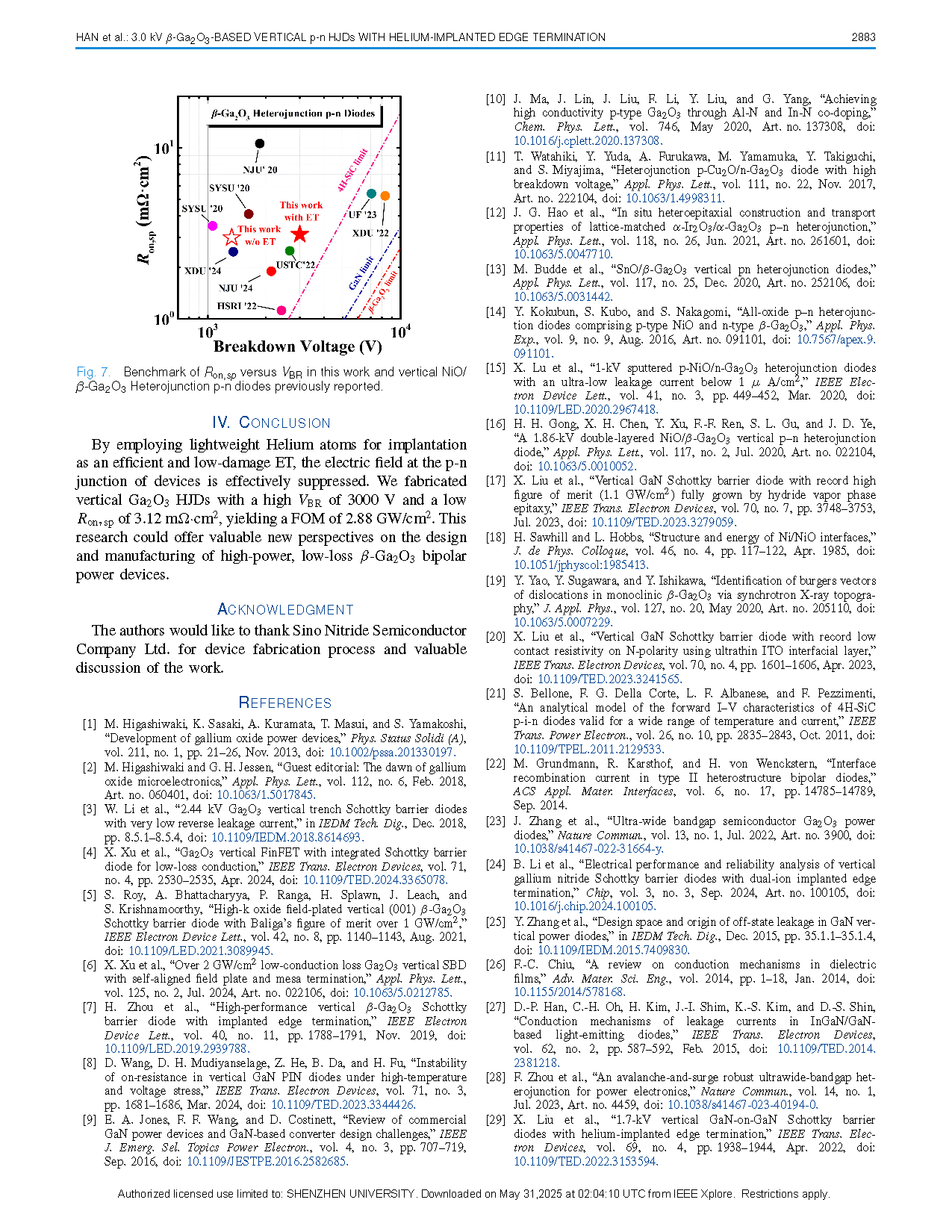
【Domestic Papers】3.0 kV β-Ga₂O₃-Based Vertical p-n Heterojunction Diodes With Helium- Implanted Edge Termination
日期:2025-07-03阅读:223
Researchers from the South China Normal University, Nanjing University and Shenzhen University have published a dissertation titled "3.0 kV β-Ga2O3-Based Vertical p-n Heterojunction Diodes With Helium- Implanted Edge Termination" in IEEE Transactions on Electron Devices.
Project Support
This work was supported in part by the National Key Research and Development Program of China under Grant 2024YFE0205100, in part by Guangdong Major Project of Basic and Applied Basic Research under Grant 2023B0303000012, in part by Guangdong Science Foundation for Distinguished Young Scholars under Grant 2022B1515020073, in part by Shenzhen Science and Technology Program under Grant KJZD20240903102738050, and in part by the Scientific Instrument Developing Project of Shenzhen University under Grant 2024YQ003.
The authors would like to thank Sino Nitride Semiconductor Company Ltd. for device fabrication process and valuable discussion of the work.
Background
Gallium oxide in beta phase (β-Ga2O3) is considered a promising candidate for high-voltage, high-frequency, and high-power applications due to its excellent material properties, such as an ultra-wideband gap of 4.9 eV, high theoretical field strength (8 MV/cm), and a Baliga’s figure of merit (FOM), FOM = V2BR/Ron,sp ) superior to Si, SiC, and GaN materials. Unipolar power devices, specifically β-Ga2O3 Schottky barrier diodes (SBDs), have been demonstrated in recent years. Various termination techniques for suppressing crowded electric field at the device edges have been attempted to achieve high breakdown voltages (VBR) and high FOM, such as trench structure, field plate structure, and Mg-ion implanted edge termination (ET). Although the great progress in unipolar devices has been made, bipolar p-n diodes can deliver higher VBR and higher current capacity, owing to excellent current capability and higher reliability.
Abstract
We demonstrated the vertical NiO/β-Ga2O3 p-n heterojunction diodes (HJDs) with a high breakdown voltage (VBR) of 3000 V and a low on-resistance (Ron, sp) of 3.12 mΩ⋅ cm2, resulting in a Baliga’s figure of merit (FOM) of 2.88 GW/cm2. Specifically, an efficient and low-damage edge termination (ET) formed by the implantation of lightweight Helium atoms was introduced to inhibit the high electric field at the p-n junction of HJDs, thereby increasing VBR of devices from 1330 to 3000 V. The reverse leakage mechanisms were fit and analyzed, revealing distinct breakdown mechanisms in He-implanted devices. The simulation results confirmed the peak electric field at the p-n junction of devices can be effectively suppressed by He-implanted ET. Meanwhile, a narrow change of devices’Ron, sp occurred after He implantation and the low-Ron, sp forward conduction of devices was confirmed by efficient charge transfer of heterojunction with density functional theory (DFT) calculation. This work may provide a new insight into the design and fabrication of high-power, low-loss β-Ga2O3 bipolar power devices.
Conclusion
By employing lightweight Helium atoms for implantation as an efficient and low-damage ET, the electric field at the p-n junction of devices is effectively suppressed. We fabricated vertical Ga2O3 HJDs with a high VBR of 3000 V and a low Ron, sp of 3.12 m·cm2, yielding a FOM of 2.88 GW/cm2. This research could offer valuable new perspectives on the design and manufacturing of high-power, low-loss β-Ga2O3 bipolar power devices.
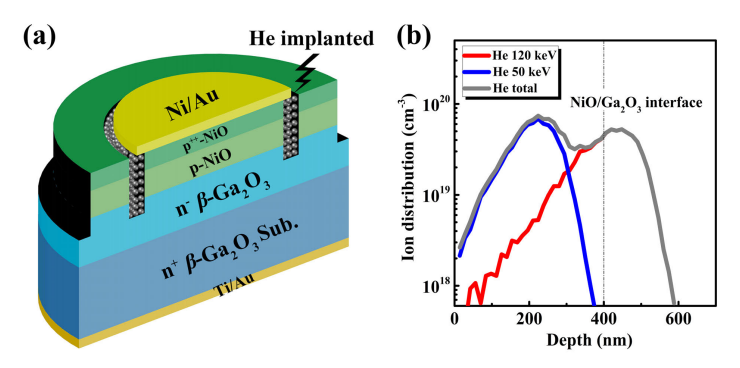
Fig. 1. (a) Schematic of the vertical Ga2O3 HJDs with He-implanted ET on bulk β-Ga2O3 substrate and (b) simulation and modeling of He implantation by SRIM.
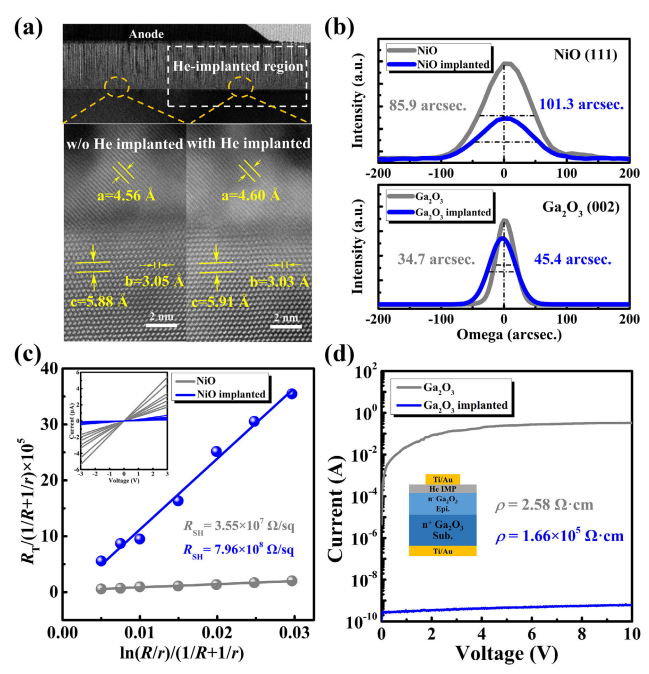
Fig. 2. (a) Cross-sectional HR-TEM and AC-TEM image of the He-implanted region, w/o He-implanted region, (b) ω-scans and FWHM on (111) and (002) planes for un- and implanted NiO and β-Ga2O3 respective, (c) I–V characteristics at different gap spacing and fit linear diagram of NiO and NiO implanted by CTLM, and (d) resistance measurement of vertical Ga2O3 and Ga2O3 implanted.
DOI:
doi.org/10.1109/TED.2025.3560277
